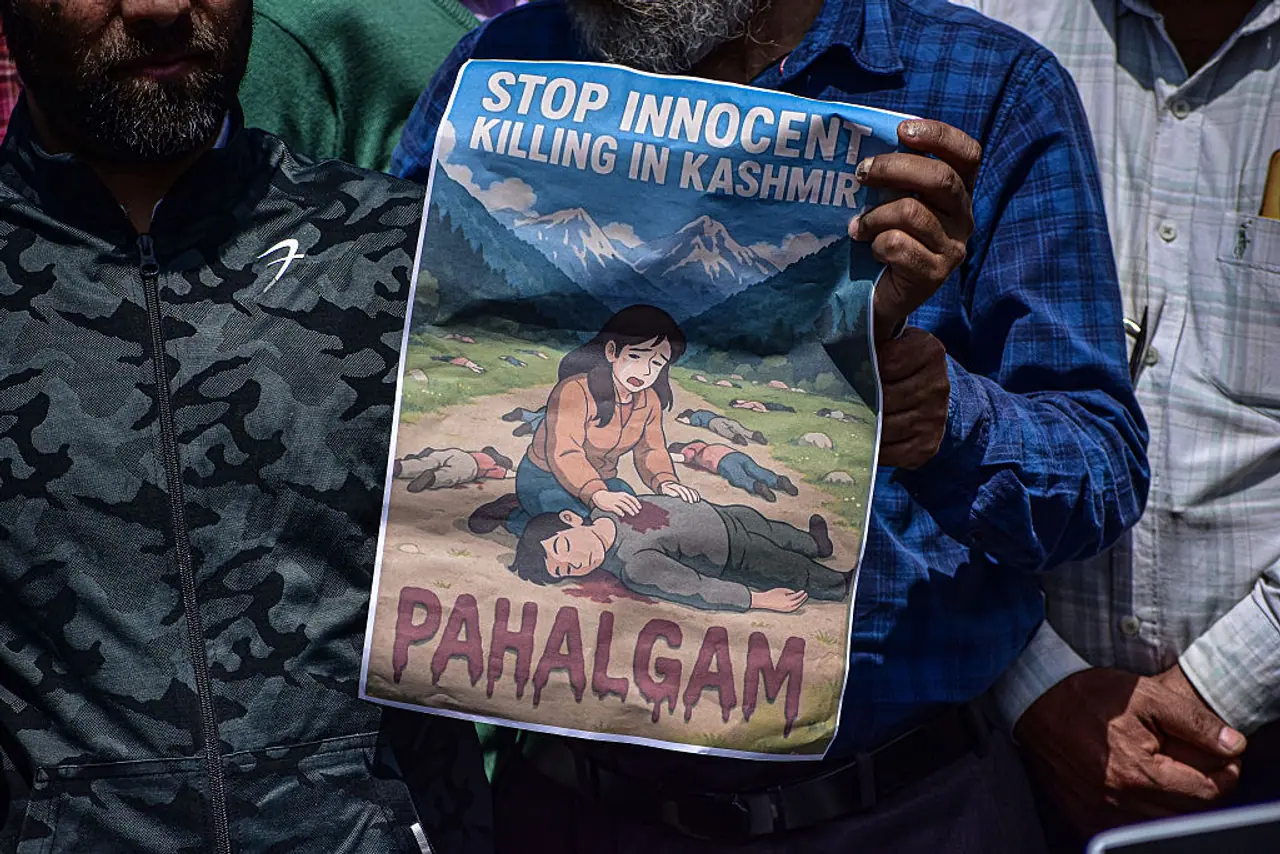Propaganda vs Reality: Decoding Pakistan’s post-Pahalgam confusion
In the wake of the Pahalgam terror attack, Pakistan’s contradictory mix of military bravado, recycled propaganda, and diplomatic confusion exposes deep strategic, economic, and credibility issues, leaving it increasingly isolated and vulnerable.

Pahalgam terrorist attack: Pakistan's miscalculations
As India continues to assess its course of action to respond to the devastating terror attack in Jammu and Kashmir’s Pahalgam, Pakistan's leadership has adopted a distinctly contradictory posture — mixing inflammatory threats with diplomatic overtures, and desperate propaganda with thinly-veiled pleas for global intervention.
This confused messaging is backed by questionable propaganda visuals and inconsistent diplomatic statements. Deep fissures and growing insecurity within Pakistan’s strategic establishment are out in the public domain for all to see.
In the aftermath of the Pahalgam terrorist attack, Pakistan’s domestic media and social media ecosystem went into overdrive, projecting an image of military robustness intended primarily for internal consumption.
This orchestrated campaign, however, has been marred by severe miscalculations.

Pakistan's orchestrated campaign
There is no dearth of illustrations to demonstrate Pakistan's orchestrated campaign. Take the example of recent video footage of Pakistani Army Chief General Asim Munir’s alleged frontline inspection along the Line of Control (LoC) being circulated online. It sparked embarrassment after independent open-source intelligence (OSINT) analysts claimed it was recycled footage from 2022.
These revelations raised critical questions about the credibility of Pakistan’s strategic messaging and the actual state of readiness within its armed forces.
As if that wasn’t enough, a promotional video released by the Pakistan Air Force (PAF) intended to showcase military strength inadvertently highlighted precisely the opposite.
Experts and analysts quickly identified visuals lifted from foreign sources, including SpaceX’s Falcon 9 rocket launches and sophisticated air defence systems such as the S-400, which is clearly not operated by Pakistan.
Pakistan ministers' contradictory statements
Pakistan lifting old videos has led to embarrassment not just externally but also domestically, reinforcing the perception that Islamabad’s military bravado might be little more than smoke and mirrors.
Diplomatically, too, the narrative emerging from Islamabad post-Pahalgam has been confusing at best (in sharp contrast to India’s actions, one might add).
Pakistan’s Defence Minister Khawaja Asif has repeatedly invoked nuclear rhetoric, openly asserting that nuclear weapons could be deployed if Pakistan's "existence is threatened."
This aggressive stance sharply contradicts Prime Minister Shehbaz Sharif’s simultaneous appeals for a "neutral and transparent investigation" into the terror attack, where he even suggested Indian complicity to international audiences.
Pakistan playing victim card?
Further muddying the waters, Pakistan’s Interior Minister has actively promoted the narrative of an imminent Indian military incursion, directing this messaging explicitly towards Western capitals and international bodies.
This tactic, defence analysts note, aims to present Pakistan as a victim urgently needing external intervention, even as other Pakistani officials simultaneously issue threats designed for domestic political consumption.
Such mixed signals highlight a troubling lack of coherence in Islamabad’s diplomatic and military strategy.
Pakistan's military mobilisation strains economy
Strategically, Pakistan’s military is facing significant internal challenges due to rising casualties in counter-insurgency operations, which are increasingly difficult to manage and conceal.
These challenges are compounded by severe economic constraints. Pakistan’s economy is under substantial pressure from high inflation, declining foreign reserves, and increasing external debt.
Following the Pahalgam attack, Pakistan was compelled to mobilise its military forces, resulting in additional daily expenditures estimated between $1.5-3.2 million, or $45–96 million monthly, according to experts.
This level of spending places further strain on Pakistan’s limited defence budget and fragile economy, raising concerns among security analysts about the sustainability of such military mobilisation in the current economic environment.
Pakistan's aggressive rhetoric masks domestic vulnerability as global powers urge restraint
Observers familiar with Pakistan's security landscape also note that the aggressive rhetoric from Islamabad often emerges precisely when its leaders are most vulnerable domestically.
Such actions appear primarily geared towards boosting internal support rather than demonstrating credible deterrence. However, these tactics have diminishing returns internationally.
Notably, key global players, including the US, the UK, and multilateral bodies like the UN, have remained distinctly cautious, advocating restraint but stopping short of direct mediation or active intervention.
Pakistan’s reliance on orchestrating provocative incidents followed by immediate diplomatic appeals has become an identifiable pattern, increasingly transparent to international observers.
Pahalgam attack exposes Pakistan’s strategic contradictions and deep-rooted fragility
Strategic contradiction has left Islamabad diplomatically isolated and exposed on the global stage. Defence experts underline that Pakistan’s repeated nuclear threats and aggressive posturing contrast starkly with its actual military capabilities and economic condition, spotlighting vulnerabilities rather than projecting strength.
Ultimately, the Pahalgam terror attack, tragic as it was, has inadvertently laid bare Pakistan’s strategic contradictions and internal vulnerabilities.
Islamabad’s simultaneous chest-thumping and diplomatic pleas for international intervention reflect deep-seated fragility.
Check the Breaking News Today and Latest News from across India and around the world. Stay updated with the latest World News and global developments from politics to economy and current affairs. Get in-depth coverage of China News, Europe News, Pakistan News, and South Asia News, along with top headlines from the UK and US. Follow expert analysis, international trends, and breaking updates from around the globe. Download the Asianet News Official App for reliable global news coverage anytime, anywhere.

